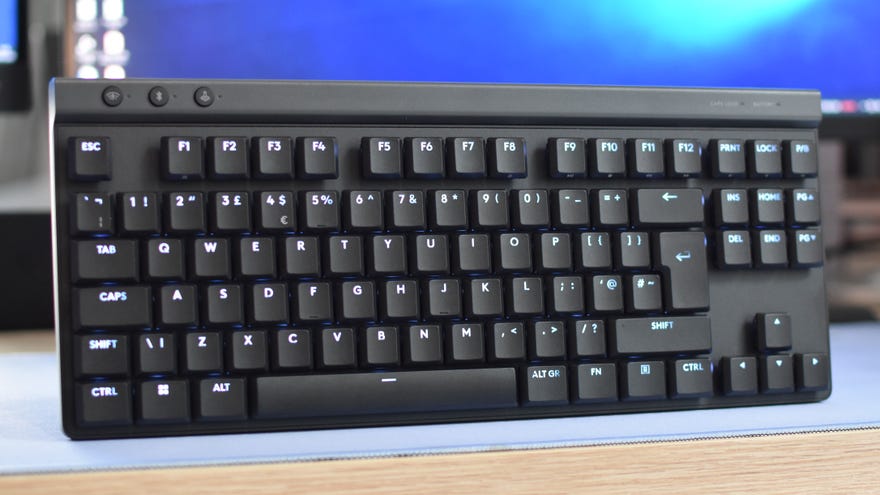HomeHardwareFeatures
The best low-profile TKL keyboard now has a mercifully more affordable cousinFingers-on with the Logitech G515 Lightspeed TKL
Fingers-on with the Logitech G515 Lightspeed TKL
Image credit:Rock Paper Shotgun
Image credit:Rock Paper Shotgun

Read enough of our hardware articles and you’ll eventually come across someone, probably me or Katharine (RPS in peace), banging on about theLogitech G915 Lightspeed Wireless. After half a decade on shelves, it’s still the best low-profile mechanical gaming keyboard going, and quite possibly the best wireless keyboard to boot – while the tenkeyless version, the G915 TKL Lightspeed, is just as lovely to use.
Between their nimble performance, crisp mech switches, and impeccable build quality, the only way in which the G915 duo underwhelms is their high pricing – very much the kind you’d want to wait for aPrime Dayor Black Friday to dull the pain of. Now, though, there’s an alternative: the new Logitech G515 Lightspeed TKL. I’ve been using it. It’s good!
Almost immediately, you tell it’s a more pared-back keyboard proposition. The bodywork is plastic rather than metal, while the G915 TKL Lightspeed’s dedicated media controls and (weirdly satisfying) volume roller have been cut. All in service of that more attainable price, of course:£140/$140might still plant the G515 Lightspeed TKL in the land of enthusiasts, but considering the G915 TKL Lightspeed (no, I don’t know why the flipped the ‘TKL’ and ‘Lightspeed’ bits) is officially listed at£219/$230and has only dropped to£159/$159, it’s a relative snip.
Almost as importantly, the G515 isn’t actually a straight downgrade. Take the switches, which are a newer version of the Logitech GL Low mechanical switches used in the G915 series, tweaked for better stability and easier keycap removal. They also take less force to depress, while simultaneously lowering the actuation point from 1.5mm to 1.3mm and deepening the total travel distance from 2.7mm to 3.2mm. This, to my fingers, is the best of all worlds, producing a lighter and more responsive input that also gives the switches a bit more room for bottoming out.
The G515 is still a true low-profile ‘board, measuring the same 22m thin as the G915, but the typing experience is just that bit closer to the decisive, gratifyingly chunky feel of a conventional keeb. I might’ve liked the Tactile switches, which I’ve been using, to have more of a tangible bump, but they still have the refined feel that a mech switch should have. And although I can’t speak for the non-bumpy Linear variants, I love the subdued sound of these Tactile switches – there’s enough audible feedback for touch-typing but no distracting clickiness or ringing on a full press, the internal damping foam likely helping with the latter.
The G515 is hardly lacking for features, either. Per-key binding and lighting customisations are still available in Logitech’s G Hub app, and the G515 matches another G915/G915 TKL party trick in being able to act as a wireless receiver for compatible Lightspeed mice. I paired up a Logitech G Pro X Superlight 2, and could play snappy shooters just as surely as if the dongle was in the PC. Except it wasn’t, thus freeing up a precious USB port. Clever. And the Lightspeed connectivity tech is just as reliable it’s always been, with Bluetooth as bonus option should you ever want to connect to a TV orSteam Deck.
Image credit:Rock Paper Shotgun
